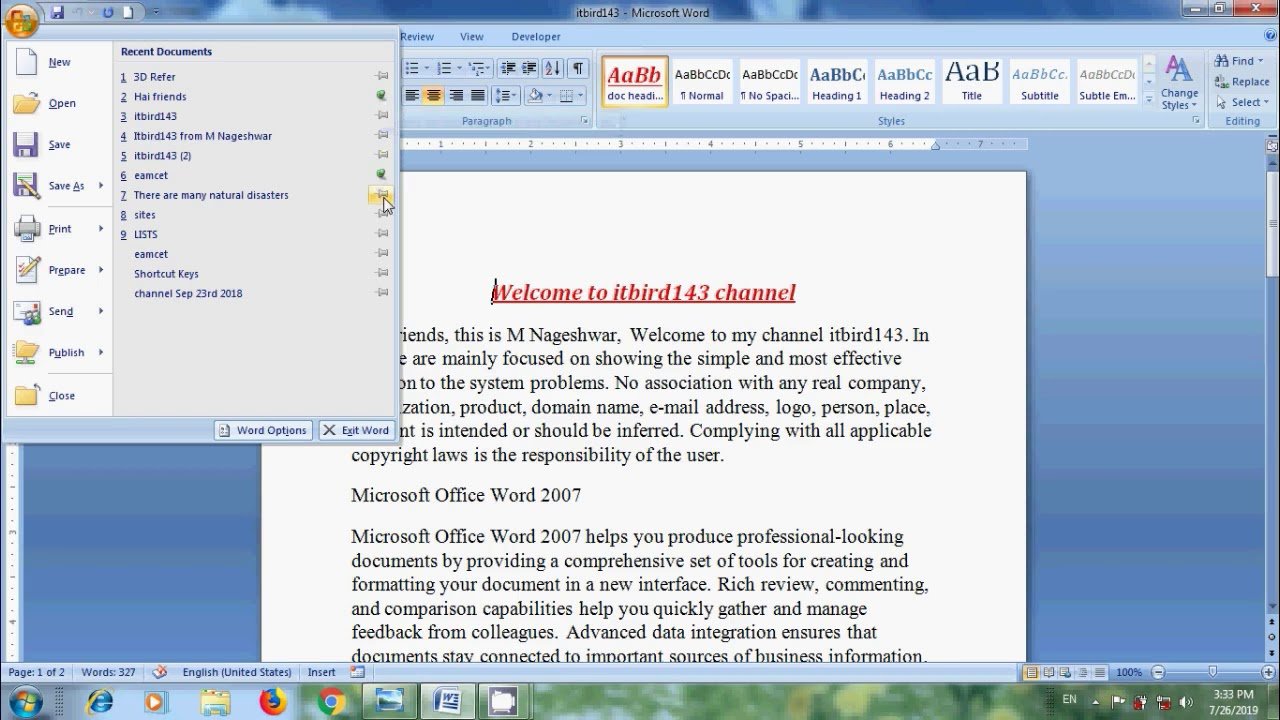How to Create a Hanging Indent in Word

If you’ve ever navigated through Microsoft Word, you’re aware of its power in refining document presentation. Among its arsenal of formatting tools lies the hanging indent—a staple in academic writing. Create Hanging Indent Word This article delves into its definition, significance, and the essential steps to implement it effectively within Word documents.

Introduction
Discover the art of document formatting using Microsoft Word’s hidden gem: hanging indents. This little method adds a level of intricacy and organization to your work. Take a journey through this complete book and discover the secrets to mastering hanging indents for outstanding clarity and professionalism in your writing.
Definition of a Hanging Indent
In the realm of document styling, a hanging indent stands as a beacon of elegance. It orchestrates a dance where the initial line gracefully aligns with the left margin while its companions elegantly step back. This symbiotic movement crafts an enchanting rhythm, harmonizing information and bestowing upon it a newfound allure, effortlessly captivating the reader.
Importance of Hanging Indents
In the academic realm, hanging indents emerge as scholarly saviors, sculpting a precise architecture for citations, references, and bibliographies. Their presence not only fosters clarity but also guards uniformity and refinement in meticulously formatted documents. With their steadfast guidance, academic prose achieves a pinnacle of professionalism and coherence. When it comes to making money on TikTok Live, understanding the strategies and techniques can unlock lucrative opportunities for content creators seeking to monetize their presence on the platform.
How to Create a Hanging Indent in Word
Crafting a hanging indent within Microsoft Word unfolds effortlessly. Adhere to these intuitive steps to bestow your document with this elegant formatting touch:
Open Your Document in Microsoft Word
To begin, open your document using Microsoft Word. This initial step sets the stage for formatting and editing your content efficiently. By accessing Word’s features, you can streamline your writing process and create professional documents with ease.

Select the Text You Want to Indent
To initiate a hanging indent in Word, begin by highlighting the desired text for indentation. Proceed to the Paragraph dialogue box, opting for “Hanging” from the Special dropdown menu, and define the indentation parameters. This finesse in formatting elevates the coherence and elegance of academic compositions, bestowing a refined and scholarly demeanor upon the document.
Access the Paragraph Dialog Box
To establish a hanging indent in Word, navigate to the Paragraph Dialog Box, your gateway to meticulous indentation adjustments. This tool empowers you to fine-tune your text’s layout, elevating readability with precision. Through these steps, your writing gains a hallmark of clarity and professionalism, setting it apart with refined formatting prowess.
Set the Indentation
Set Indentation in Word documents is crucial for a neat layout. By adjusting the Paragraph settings, you can create a hanging indent, enhancing readability. Remember to keep consistent formatting throughout your document. Utilize this simple technique to give your work a professional touch.
Apply the Hanging Indent
In document formatting, applying a hanging indent is crucial for clarity and professionalism. Aligning subsequent lines further right than the first line of a paragraph enhances readability and maintains consistency, particularly in academic or formal writing. This simple yet effective technique elevates the presentation of your content.
Benefits of Using Hanging Indents
Utilizing hanging indents in your documents enhances readability, providing a structured layout for more straightforward navigation. This formatting style fosters a professional appearance and adherence to academic standards, particularly in citations and references. By employing hanging indents, you ensure consistency and clarity, elevating the quality of your written work.
Enhanced Readability
Enhanced readability is crucial for effective communication. We are employing hanging indents in documents to aid in organizing information and guiding readers smoothly through content. This formatting technique enhances comprehension and professionalism, making documents more engaging and accessible. Improve readability today with hanging indents.
Organized Appearance
In document formatting, achieving an organized appearance is crucial for readability and professionalism. Techniques like hanging indents enhance the visual structure, ensuring information is presented clearly and cohesively. Consistency in formatting throughout the document further reinforces its polished and professional look. When it comes to creating a PDF file with multiple images, mastering the process ensures seamless compilation and presentation of visual content in a single document.
Standard Formatting in Academic Writing
- In academia, upholding standardized formatting is paramount for fostering clarity and professionalism. Embracing uniform indentation, notably poised hanging indents, serves as a beacon for enhancing textual legibility. Vigilance in avoiding the amalgamation of indentation styles and the judicious use of hanging indents ensures optimal document presentation.
- Before the sealing of manuscripts, a thorough examination of formatting details becomes imperative. Furthermore, unswerving adherence to citation style norms governing citations, references, and bibliographies is an absolute requirement, bolstering the scholarly integrity inherent in written discourse.

Common Mistakes to Avoid
When employing hanging indents, steer clear of conflating diverse indentation methods such as block indents. Likewise, resist the temptation to inundate your document with excessive hanging indents, as this may result in clutter. Upholding clarity and uniformity are paramount to achieving a professionally formatted document. Exercise vigilance to guarantee that your work exudes a refined and orderly demeanor.
Mixing Up Different Types of Indents
Blending various indent styles breeds discord in document formatting, which breeds inconsistency. Misinterpreting hanging indents for block or first-line indents disrupts the visual harmony and undermines your work’s professionalism. Stay vigilant, grasp the nuances of each indent type, and wield them judiciously for a harmonious and polished presentation.
Overusing Hanging Indents
Overutilizing hanging indents can make your document manageable, diminishing readability and professionalism. It’s crucial to reserve them for necessary instances like citations or bibliographies. Avoiding excessive use ensures a cleaner layout, enhancing the overall presentation of your content. Strike a balance for optimal document appearance and reader engagement.
Tips for Utilizing Hanging Indents Effectively
To make the most of hanging indents, consider the following tips:
Use Consistent Formatting Throughout the Document
At the core of a masterful composition lies the foundation of consistent formatting. Seamlessly blending style, font selections, and spacing, you craft a canvas that epitomizes readability and professionalism. Whether fashioning an academic magnum opus or a corporate unveiling, unwavering commitment to formatting standards heightens the document’s visual appeal, etching an enduring impression upon its audience.
Adjust Indentation Settings as Needed
Adjusting indentation settings as required is crucial for optimal document formatting. Tailoring the indentation ensures consistency and readability throughout the text. By customizing the indentation, writers can achieve the desired layout, enhancing the overall presentation of their documents. Efficiently managed indentation elevates the professionalism and visual appeal of written content.
Check Formatting Before Finalizing Your Document
Before finalizing your document, ensure formatting is correct. Mistakes can undermine professionalism. Consistency is critical; double-check indentations, font styles, and spacing. Reviewing ensures a polished presentation. Look for errors to maintain a professional appearance in your work.
Examples of Hanging Indents in Practice
Examples of hanging indents in practice vary across documents, from academic papers to legal texts. They’re commonly seen in bibliographies, ensuring consistent formatting. Create Hanging Indent Word In academic writing, citations and references utilize hanging indents for clarity and adherence to style guidelines. Legal documents often employ them for lists of statutes and case references.
Academic Papers
Within academic discourse, the role of hanging indents in framing citations, references, and bibliographies cannot be overstated. Their presence not only bolsters readability but also upholds professionalism standards. A steadfast commitment to formatting consistency is imperative, as it serves as the bedrock for clarity and adherence to citation style directives. Employ hanging indents with discernment to preserve the refined aesthetic of scholarly papers.
Bibliographies
Bibliographies serve as crucial references in academic writing, listing sources cited or consulted. They enhance credibility and aid further research. Create Hanging Indent Word Employing hanging indents in bibliographies ensures consistent formatting and readability. Accurately using this technique is essential for maintaining scholarly standards and facilitating comprehension of cited works.
Legal Documents
In the intricate domain of legal documentation, hanging indents emerge as indispensable assets, ensuring the delivery of organized and polished content. Through their adept facilitation of enhanced readability, notably in cataloging statutes, case names, and references, hanging indents establish the bedrock of a meticulously structured document. Their judicious application guarantees both consistency and fidelity to format standards, thus fortifying the communication of transparency and credibility within legal discourse.
Alternatives to Hanging Indents
When seeking alternatives to hanging indents, consider bullet points for concise presentation, numbered lists for sequential information, and block quotes for highlighting excerpts. Create Hanging Indent Word Each option offers a distinct formatting style, catering to diverse document needs and enhancing readability. Explore these alternatives to elevate your document’s visual appeal.
Bullet Points
- Learn to create hanging indents in Word effortlessly.
- Understand the significance of hanging indents for readability.
- Discover easy steps to apply hanging indents in your documents.
- Avoid common mistakes when using hanging indents.
- Explore alternatives to hanging indents for varied formatting needs.
Numbered Lists
Utilizing numbered lists proves instrumental in articulating information with clarity and brevity. These lists elevate readability and understanding by delineating process stages or accentuating pivotal components, thereby enhancing the overall effectiveness of communication. By adequately utilizing numbered lists, authors may interest readers while delivering content with precision and efficiency.
Block Quotes
Block quotes, the pinnacle of formatting elegance, establish a distinct identity inside writings by highlighting essential extracts or phrases. These textual islands stand out within the sea of text, emphasizing the importance of critical paragraphs. Using block quotations to add depth and authority to your writing will captivate readers and improve their interaction with the text.
Conclusion
In summation, hanging indents stand as invaluable assets in the arsenal of formatting tools, elevating the readability and professionalism of your documents, notably in academic or formal spheres. By adhering to the straightforward steps delineated in this discourse, you effortlessly imbue your Microsoft Word documents with hanging indents, thereby augmenting their visual allure and impact.
FAQs
When is the ideal moment for implementing hanging indents?
Hanging indents find their prime application in meticulously formatted documents like scholarly papers, bibliographies, and legal manuscripts.
Can I fine-tune the indentation parameters for hanging indents?
Indeed, within Microsoft Word, you wield the power to tailor the indentation settings to suit your aesthetic preferences, ensuring optimal presentation.
Are there alternatives to hanging indents?
Indeed, you have alternatives such as bullet points, numbered lists, and block quotes, which are adaptable to the nature of the information you seek to convey.
What renders hanging indents indispensable in academic literature?
The essence of hanging indents lies in their role as custodians of consistency and coherence in academic compositions, particularly accentuated in the delineation of citations, references, and bibliographies.








